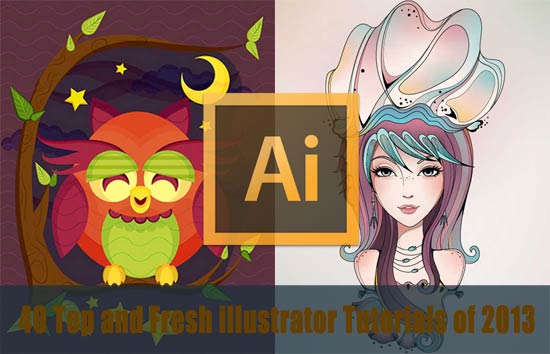

- #FREE ADOBE ILLUSTRATOR CS3 TUTORIAL HOW TO#
- #FREE ADOBE ILLUSTRATOR CS3 TUTORIAL DOWNLOAD#
- #FREE ADOBE ILLUSTRATOR CS3 TUTORIAL FREE#
- #FREE ADOBE ILLUSTRATOR CS3 TUTORIAL WINDOWS#
Just click the download button below to download the Illustrator File. I have created a set of brushes that you can download to use. Like with the Watercolor Art Brush, try out different shapes and different Scatter Brush Options. Now you have a nice Watercolor Scatter Brush to play with.
#FREE ADOBE ILLUSTRATOR CS3 TUTORIAL HOW TO#
This Scatter Brush uses the Water Spots from the VectorTuts tutorial, but I will go over how to create them again.Ĭreate a ellipse with the Ellipse Tool (l), roughly. Don’t stop there, try to make other watercolor brushes, like the ones you can download at the bottom of the post! Now you have a Watercolor Art Brush that you can create vectors with! Just use the Brush Tool (b) to paint with it or apply it to any path. This will let you change the color of the brush without creating a new brush. Go down to the bottom of the dialog to the Method and choose Tints from the drop-down list. When the New Brush dialog opens, select New Art Brush to bring up the Art Brush Options dialog. Next, select your blend and drag it into the Brush Palette with the Selection Tool (v). With the Blend selected, choose Multiply from the drop-down menu in the Transparency Panel. You can also check your Blend Options by going Object > Blend > Blend Options.

If you do not have a smooth blend (they looked stepped) make sure that your shapes are closed and not overlapping each other. Once the three shapes are drawn, select all three and create a Blend by going Object > Blend > Make (⌘ alt/option b). Fill this shape with a 30% black and no stroke.

Fill the new shape with a 40%black and no stroke.ĭraw a third shape inside the second one, remembering to close the shapes and not to overlap. If you are having problems seeing the first shape, (because the color is white) just have the first shape still selected with you are drawing the second one. Next, draw a smaller brush stroke shape within the first one with the Pencil Tool (n) and make sure the paths don’t overlap. An easily way to close the path is to hold down Option / Alt right before you are done drawing, as explained in a previous post. Also, make sure to close the path for the brush shape you just created. Make sure to create some rough edges in the brush, this really helps the “bleeding” effect you get with watercolors. It does not have to be exact, just rough dimensions for your first brush. Start drawing a brush stroke shape with the Pencil Tool (n), around a height of. 5 pixels, just like in the Vectortuts tutorial. In this dialog, you want the Fidelity to be. Double-click on the Pencil Tool (n) in the Tools Panel to bring up the Pencil Tool Preferences dialog. To start, you will need to set the some of the Pencil Tool’s setting. You might be saying “Doesn’t Illustrator already supply you with some watercolor brushes?” You are right, but the brushes we are going to create have soft edges that blend well together, making them look more like watercolor brushes.
#FREE ADOBE ILLUSTRATOR CS3 TUTORIAL WINDOWS#
⌘ is displayed for the Command key (mac), with the Ctrl key being the Windows equivalent (not displayed). Keyboard shortcuts are displayed in orange. This tutorial was created with Illustrator CS3.
#FREE ADOBE ILLUSTRATOR CS3 TUTORIAL FREE#
If you haven’t checked out the post, you should now! In the following tutorial I will explain how to create a couple watercolor brushes, adding to the VectorTuts tutorial, and at the end of the tutorial you can download some Free Vectips Watercolor Brushes! This post is an extension of my Watercolor Vector Flower Illustration tutorial that appears on.


 0 kommentar(er)
0 kommentar(er)
